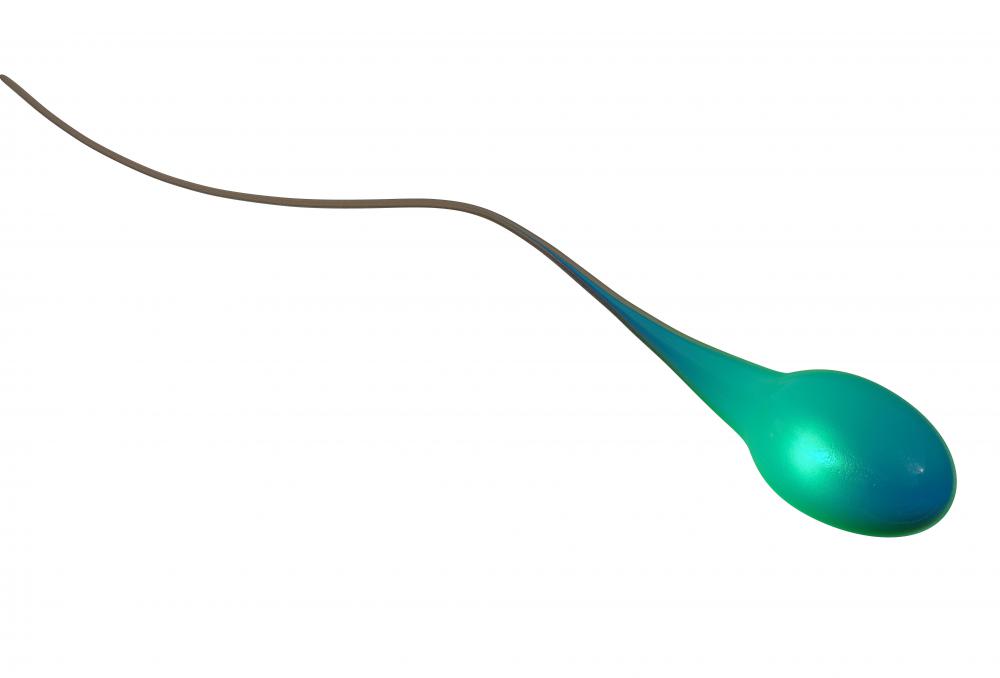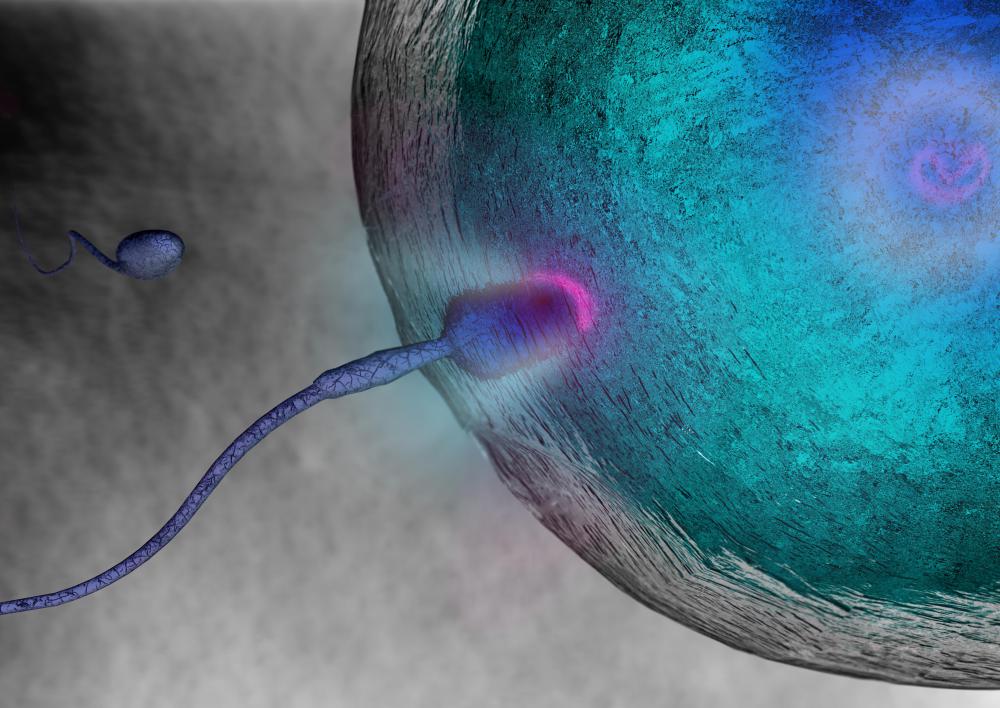At WiseGEEK, we're committed to delivering accurate, trustworthy information. Our expert-authored content is rigorously fact-checked and sourced from credible authorities. Discover how we uphold the highest standards in providing you with reliable knowledge.
What Is the Acrosome Reaction?
When a sperm meets an egg, it needs to get through the outer layer of the egg to fertilize it. The sperm first attaches itself to the egg, then it releases enzymes that make a hole into the egg for the sperm. Finally, the sperm's tail propels it inside through the hole. The acrosome reaction refers to the release of enzymes after the sperm has attached to the egg.
The outer layer of an egg is called the zona pellucida. This layer contains a certain type of carbohydrate molecule that sticks out and attaches onto sperm. The sperm, it is thought, also has molecules on its surface to attach onto the zona pellucida. The exact type of carbohydrate receptor varies with animal species, which is one of the reasons why different species cannot usually reproduce with each other.

A sperm has a large head, a small body, and a wiggly tail. The large head contains most of the useful parts, including the genetic material which will eventually form half of the new baby's genes. It is the head that sticks onto the outside of the egg. Surrounding the sperm head is an outer layer which contains a large pool of enzymes called an acrosome. Acrosin and hyaluronidase are examples of the enzymes inside the sperm head.

After the sperm head attaches to the zona pellucida, the carbohydrate molecules that stick onto it also break down the outer layer of the sperm head. This releases the enzymes of the acrosome, and they, in turn, break down the outer layer of the egg. This acrosome reaction gives the sperm, now with a smaller head, a way into the egg. The propulsion of the sperm's tail also helps it to push its way in.
If the sperm successfully fertilizes the egg, the egg changes to make itself impossible to fertilize by other sperm. Sperm that are attempting to get through the zona pellucida via the acrosome reaction are prevented from doing so as the zona pellucida toughens. The zona pellucida carbohydrate receptors also fall off, preventing new sperm from attaching.
This is essential as eggs that are fertilized with more than one sperm cannot form a functional organism, due to the presence of too much genetic material. A normal acrosome reaction is essential to fertilization in humans, as sperm without the acrosomal enzymes on the front of their heads cannot get into the egg. Lack of acrosomal enzymes is one of the potential causes of infertility in men, and may be observable under the microscope.
AS FEATURED ON:
AS FEATURED ON:












Discuss this Article
Post your comments